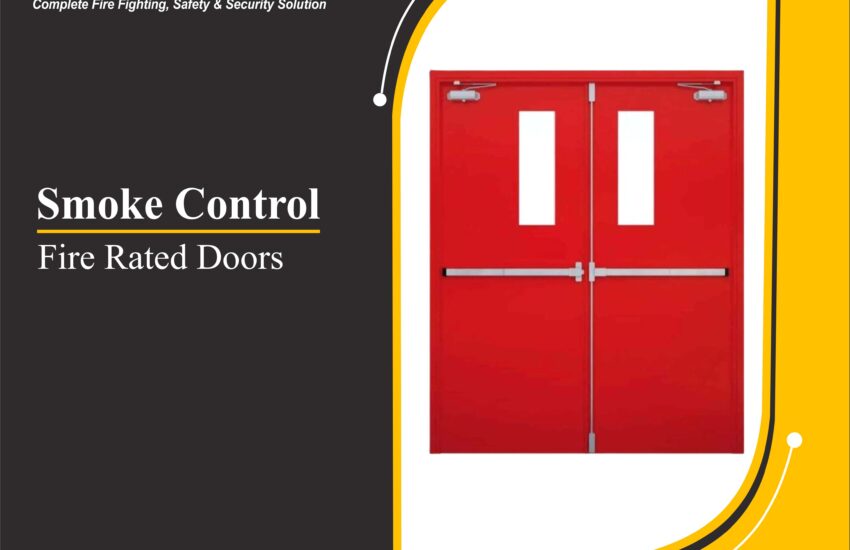Fire Rated Doors play a crucial role in modern building safety. Not only do they protect lives, but they also minimize property damage during fire incidents. Whether you’re managing a residential complex, a commercial building, or an industrial facility, choosing the right fire rated door is essential for safety and legal compliance.
In this guide, we’ll cover everything you need to know — from how fire doors work to where and why you should install them.
🔍 What Are Fire Rated Doors?
A fire rated door is specially designed to resist fire, heat, and smoke for a specific period — typically 20, 30, 60, or 90 minutes. These doors help contain a fire in one area, allowing more time for evacuation and reducing the chance of it spreading.
Unlike regular doors, fire rated doors include:
- Fire-resistant materials such as steel, gypsum, or vermiculite board
- Intumescent seals that expand in high heat to block smoke and flames
- Fire-rated hardware including closers, locks, and hinges
Because of these features, fire doors significantly enhance safety during emergencies.
Why Are Fire Rated Doors Important?
1. They Save Lives
Fire rated doors slow the spread of fire and smoke. As a result, building occupants have more time to exit safely.
2. They Ensure Code Compliance
Building codes such as NFPA 80, the International Building Code (IBC), and local regulations often require fire doors in specific areas. For instance, stairwells and corridors must be protected with certified fire doors.
3. They Protect Property
In addition to saving lives, these doors limit fire damage to certain areas. Therefore, they reduce costly repairs and business downtime after a fire.
4. They Meet Insurance Requirements
Insurance companies frequently require fire door compliance to approve fire coverage. Installing them can also lower your premiums.
🏢 Where Should You Install Fire Rated Doors?
Fire rated doors should be installed in locations where fire is likely to spread. These include:
- Entrances to stairwells
- Elevator lobbies
- Mechanical rooms and boiler rooms
- Corridors in commercial buildings
- Between garages and living spaces in residential buildings
Furthermore, multi-tenant housing, hospitals, and schools benefit greatly from fire rated doors.
🔧 Understanding Fire Door Ratings
Fire doors are tested and certified based on the amount of time they can withstand fire. Each rating serves a different purpose.
- 20-Minute Doors: Suitable for low-risk areas in residential buildings
- 45-Minute Doors: Ideal for hallways and corridor partitions
- 60-Minute Doors: Often used in stairwells and main fire barriers
- 90-Minute Doors: Required in high-risk zones like furnace or chemical storage rooms
- 180-Minute Doors: Typically used in industrial settings with extreme hazards
Before choosing a door, always consider your building’s fire risk level and applicable codes.
📋 Certification and Compliance Standards
Fire rated doors must meet strict testing and certification standards. Reputable manufacturers provide labels and documentation that show compliance with:
- UL (Underwriters Laboratories)
- NFPA 80
- BS 476 (UK Standard)
- EN 1634 (European Standard)
Additionally, always ensure proper installation by certified professionals. A poorly installed fire door can fail during an emergency.
🛠️ Installation and Maintenance
Correct installation is vital for fire doors to perform effectively. Use certified installers who understand fire codes and door hardware compatibility.
Maintenance Tips:
- Test door closers and latches regularly
- Inspect intumescent seals for damage or wear
- Ensure nothing obstructs the door’s automatic closing
- Never wedge or prop the door open
Routine inspections are often legally required in commercial settings. Make them part of your building’s safety checklist.
Benefits of Fire Rated Doors at a Glance
- 🔒 Enhances safety
- ✅ Meets legal requirements
- 💼 Required by insurers
- 🏢 Suitable for all property types
- 🔧 Low maintenance
- 🔥 Prevents fire from spreading
- ⏳ Buys time for evacuation
- 💰 Saves money in the long run
🔚 Final Thoughts
In conclusion, fire rated doors are essential for every building’s fire protection strategy. By choosing certified products and ensuring proper installation and maintenance, you not only comply with safety codes but also protect people and property.


